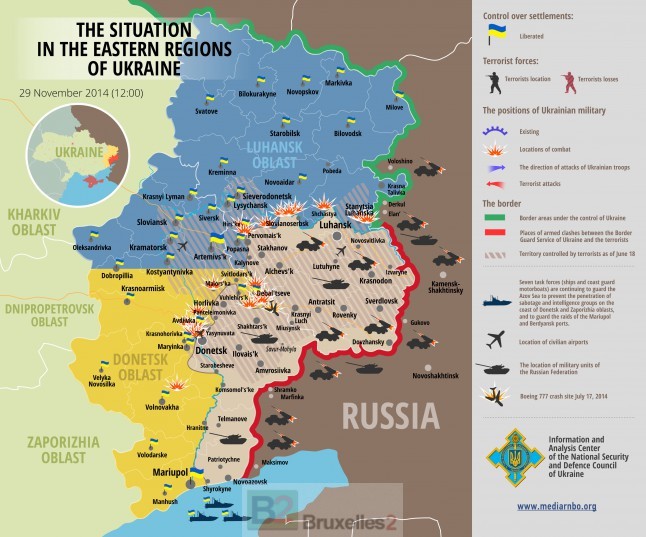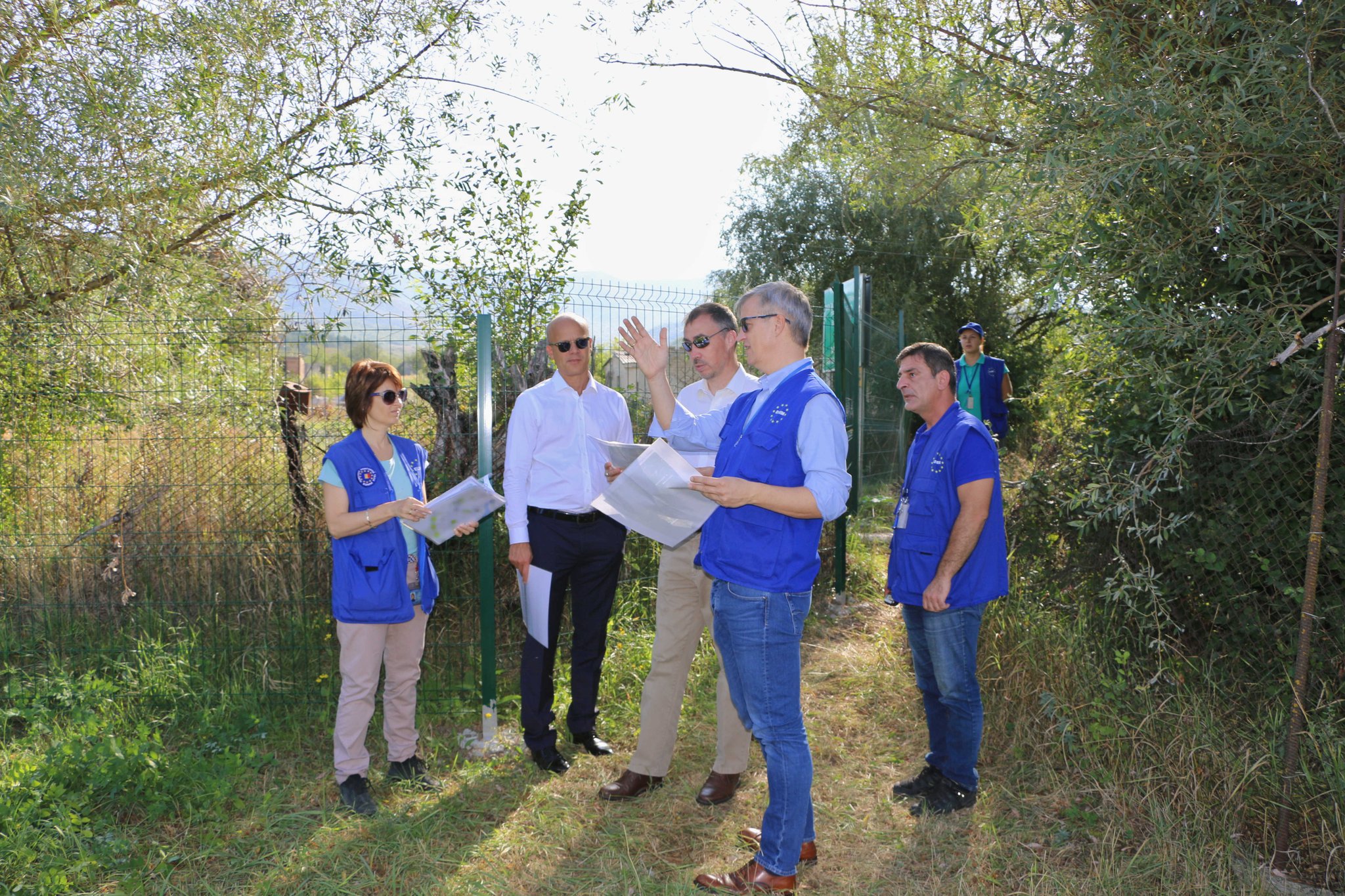Story of Georgia 8: the main challenges of the EUMM mission
(B2)At the end of this report, we can see what obstacles, what challenges, the mission of European observers in Georgia, “EUMM Georgia”, is facing and above all may be faced with tomorrow.
1. The issue of visibility.
This is one of the first concerns of observers. Failing to all have the same uniform – the pre-constituted units (police, gendarmes, carabinieri) retain their national uniform – it was decided that all observers would have a blue chasuble and a blue beret, as well as an armband, which they put on as soon as they are on a mission – or at least approaching a checkpoint or civilian personnel… Khaki has normally been prescribed, to avoid any confusion. In order to identify EUMM Georgia vehicles, blue stickers were stuck on each side, and fluorescent blue and yellow bands, as well as a flag on an illuminated mast, appeared to avoid any confusion. A necessity ! Patrols circulate day and night, 7 days a week. And at nightfall or at night, the aim is to avoid any mistake. Which is not easy!

The Polish AMZ on the road © NGV
European vehicles are indeed very dissimilar. Between the Italian Hummer returned from Afghanistan, the classic German Mercedes, and the French Panhards, there is a heterogeneous assemblage of equipment, both difficult to maintain logistically (go find a Panhard tire here, someone tells me technician…). But above all which does not facilitate visibility on the ground. Colors, different formats, do not make the work easier. And I would even say it is dangerous for observers. Certainly military colored vehicles were repainted upon arrival, like the Italian vehicles which changed from the sand Iraq version to white. Likewise, the vehicles used by the French gendarmes were repainted blue before departure, the usual color of the gendarmerie. But there are still a few armored vehicles – in khaki – the Polish AMZ in particular.

The Italian Hummers painted white in the parking lot of
Tbilisi © NGV
Dilemma: have a peaceful approach or protect the observers. Moreover, they are not adapted to the character of the mission. One has the impression to see them that there is an operation of
important policing. Even if the equipment is neutralized. Fully armored vehicles or vehicles equipped with tear gas grenade launchers are a little too “offensive”. At the same time, it must be recognized, the danger is not absent. And it is difficult to put observers in light vehicles that are not armored.
2. the challenge of accessibility.
Georgia is largely a country of mountains. The northern part of Abkhazia and Ossetia are bordered by mountains from 2000 to 4000 meters. Unreachable in normal times. Even today, observers recognize this. The helicopter could be a solution (the mission does not have one – except for medical evacuations where it uses a private company). But it faces a serious security risk. “I wouldn’t really want to wander around in the air near the border” explains an observer yet accustomed to high-risk missions. Admittedly, apart from a few drones (some of which were shot down), air activity is effectively limited near the border.
3. The communication slalom.
Communication is an important axis, not to promote the mission but a condition for the smooth running of the operation. This is firstly due to the very context of the war in Georgia. Indeed, in addition to the human and material damage, this war was also covered in the media, and still is. Just on the extent of human losses, there is still censorship and propaganda plays on both sides. Even more so since the ceasefire because it is now a question of examining the consequences of the war, and determining responsibilities. In this way, EUMM resembles an interposition mission more than a classic interposition mission. Especially since the expectations among the population are very high. With the risk of being disappointed. Observers are expected to restore calm and tranquility, to speak out about this or that incident, to allow us to know the truth. Even if it is not entirely within their means or their skills. Additional confusion is the presence of several international organizations, representing the European continent and the international community (OSCE, UN, Council of Europe, etc.), responsible for
different missions: observation (EU, OSCE, UN), humanitarian (WFP, UNHCR, EC, etc.). Which adds to the confusion, especially since some have very equivalent acronyms (with the dominant blue), or even the same (Council of Europe, EU). In short, a real operational challenge.
4. The question of organization.
We must not hide. This mission has a very strong “military” or at least “civil security” characteristic. And the attitudes of the observers are very military or police. You just have to look at the numerous communication bans. In a certain sense fortunately. Refusing to see him is, in my opinion, harmful to the effectiveness of the mission. Because it is a mission which also takes place in a risky context.
5. Mission management
Installed in record time, the EU had to act very quickly. So in the absence of a canteen or even a cafeteria, it was the cleaning lady who acted as a canteen for the first weeks and the EUMM badges were designed in-house and… “hand-sewn” by her husband. Now we have to put everything in order, following the usual EU rules. Because this mission remains subject to most of the rules in use, particularly public procurement. The management of means that arrive very quickly but which are dissimilar is also necessary. All of this represents a task that is certainly discreet but which is undoubtedly a major administrative challenge for the smooth running of the mission.
(NGV)

